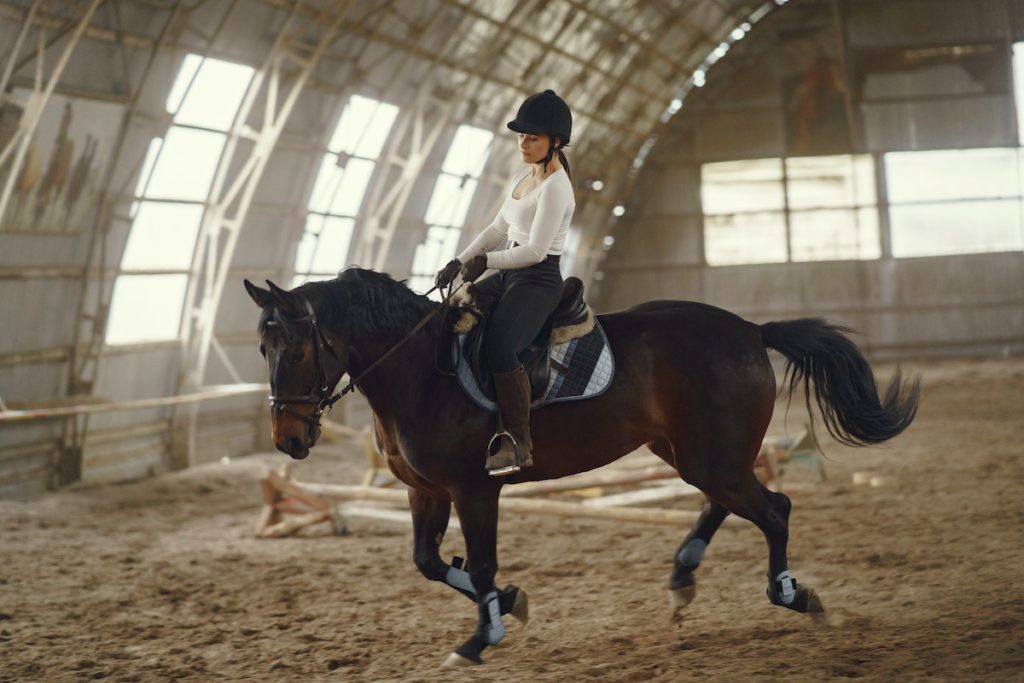One of the best things you can do when riding an in-ring is to keep the horse’s attention focused on you. Getting out of the arena helps the horse who is stressed out realize that they can be a horse without any pressure and at the same time still be fit. Awareness helps ensure our horses are calm at the gates when they get out for the ride. The horses are feeling pressure from the other horses getting to run, but they know it is okay. Nothing is going on.
When the horses kick, the reaction to fleeing or fighting may be one of two ways. However, panicking is natural to horses, and their flight or fight response usually will be initiated when they sense a threat or danger. Horses are susceptible to changes, new environments, and unfamiliar situations, so a new setup in an arena, like posts laid on the floor, may trigger a horse spooking reaction. It may be that scary, scary corner of the arena that houses an imaginary monster that causes your horse to spook, or even outside, unfamiliar noises which they feel threatened.
For example, it may be a scary area of the indoor arena your horse has become dislike in a theatre. Start in a safer, less eerie part of the arena, then slowly begin exploring the entire arena while your horse stays with you. Over time, as you and the horse develop trust in one another, slowly start incorporating the scarier things into the arena, like brightly coloured fillers, so you can work on skills and continue building a positive experience.
Exactly how long your shoes can last will depend on your horse’s work and the terrain you are riding. For instance, shoes might not last long if you are riding over challenging terrain, rocky surfaces, or roads, but they might previous several restarts if a horse is mainly ridden over grass or soft ground. For example, a Clydesdale pulling a cart along hard Tarmac roads would require a heavier-duty shoe than a horse showing in a more delicate ring. Nevertheless, some riders and trainers almost feel horses need shoes, believing it provides better foot protection while working.

In addition, shoe materials can degrade due to the effects of a horse’s hoof activity. The traffic patterns horses make when using an arena will make the footing materials uneven. From a horse’s arena feet up to the foundation beneath the surface, each layer will deteriorate or shift rapidly without proper maintenance.
Without a good base and correct footing, it is hard to keep going consistently enough for the horse’s health and safety. If a base is installed correctly, your arena will never have any low spots, deep spots, or areas where water will pool. Just like a building’s base is essential for keeping it standing long-term, a base allows for footing products in your arena to support your horses correctly over an extended period. The footing needs to be knitted into the base material, meaning that loose footing cannot freely slide around on the base material while horses are working in an arena.
Whether an outdoor arena or indoor arena, the base plays an integral part in supporting the horses. You must first consider your base in building or upgrading your horse’s facilities. While all the preceding arena design considerations are crucial for eventual success, perhaps no other component is as critical as selecting the base itself for an area.
Essentially, horses naturally establish a home base within the arena — typically close to the entry gate, if alone in the arena, says Burke. In the case of the arena horse, her home base is a spot close to her group — the gate.
If there is a second horse in an arena, a horse in an arena shifts its home base to the area closest to that other horse, even if it is entirely across the arena on the far side of the door. Burke said a horse in an arena by himself usually stays close to the entry gate, sometimes rolling over there – a sign he feels safer in this space.
These loops, as they are called these loops, are likely familiar to any horse owner who has placed a horse alone in an arena during turnout, Burke said. He said that anything new, or probably going to be frightening, may be made easier to get around by being near the base of operations, the arena entryway, or another horse. Despite being familiar with this scenario, many riders fail to consider these cycles when working horses alone in an arena.
A misbehaving horse in the centre line will come through the gate and away if the gate is left open. Leaving the terrain will never give you those benefits, so your horse’s performance will suffer. Your horse will be unable to trust the footing and be reminded, possibly scared, by uneven patches. The perfect footing helps cushion every stride of your horse by allowing their hooves to slip a bit while setting and providing a solid surface they can dig into when pushing off.


